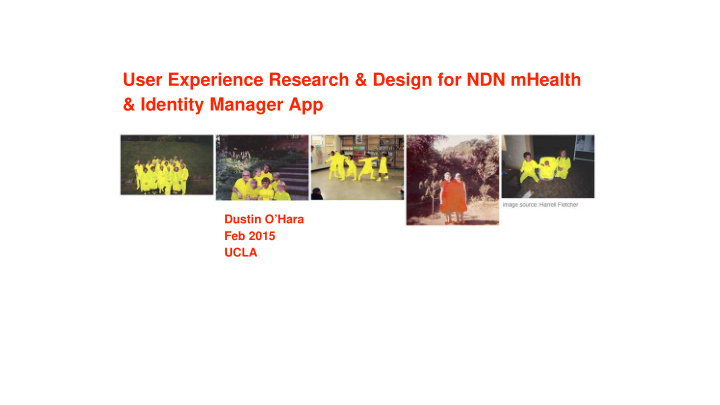



User Experience Research & Design for NDN mHealth & Identity Manager App Dustin O’Hara Feb 2015 UCLA
“People want privacy, but they don’t want to practice privacy…” - Jean-François Blanchette
according to Google Out of the 2.92 billion internet users, roughly 42% of them are on facebook
Articulating one’s place within the network is often foundational to social practices involving trust.
The ID Manager is about the management of context & trust (which then informs who gets access to public keys) Trust & context are first established by situating and understanding one-another’s place within the network, which is mirrored by the nature of the exchange.
ID Manager UX Ontology - numerous self defined identities - users - apps - data types
Identities: enable to the user to quickly cluster their tasks, into self described categories or identitieis, (i.e. home & utilities, family, work, social, media, etc) that are each defined by the particular networking of users, apps, and data types.
Data Types: allow the user to quickly understand what data, or public keys, the various apps and users have access to. Rather that managing specific public keys, the user authorized clusters of public keys, for present and future exchanges.
Users: are understood as other individuals or groups that the user is actively, or potentially, exchanging data with. When authorizing a connection with a user, or reviewing existing connections, users are understood by their “mutual apps,” their “mutual users,” and the “data types” associated with their mutual apps.
Apps: function as form of trusted context for a given exchange, and are understood by their necessary “data types” and "mutual users.” Apps are identify and associate with a wider range of institutions and groups.
Recommend
More recommend